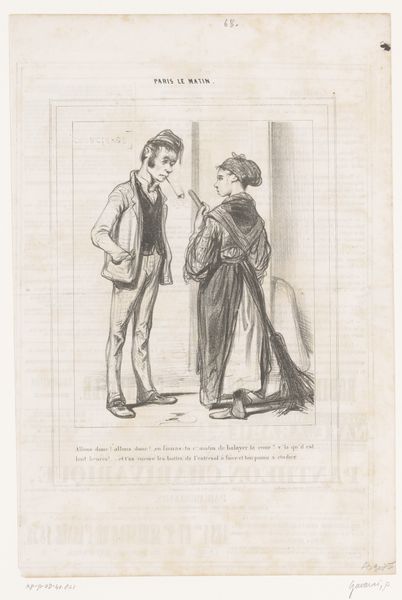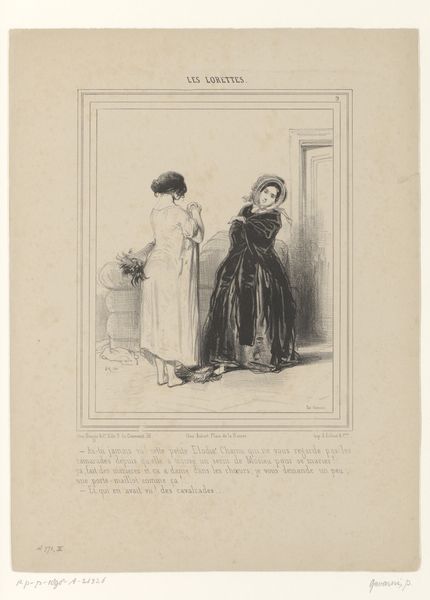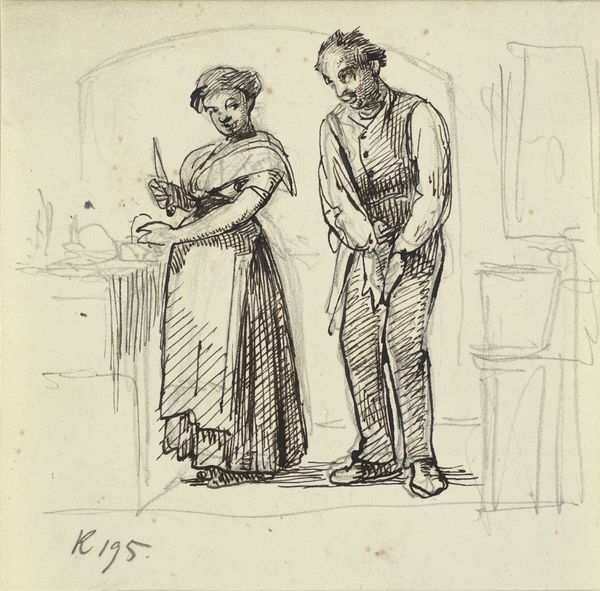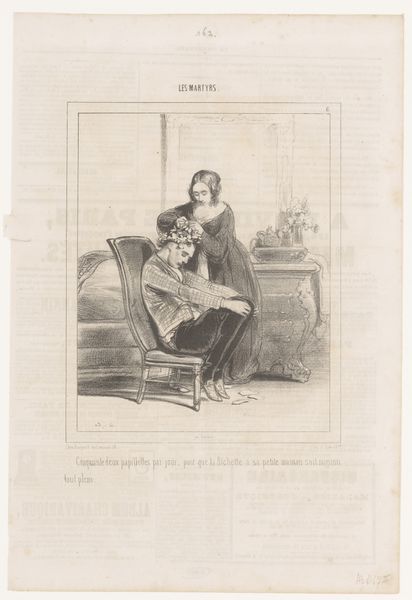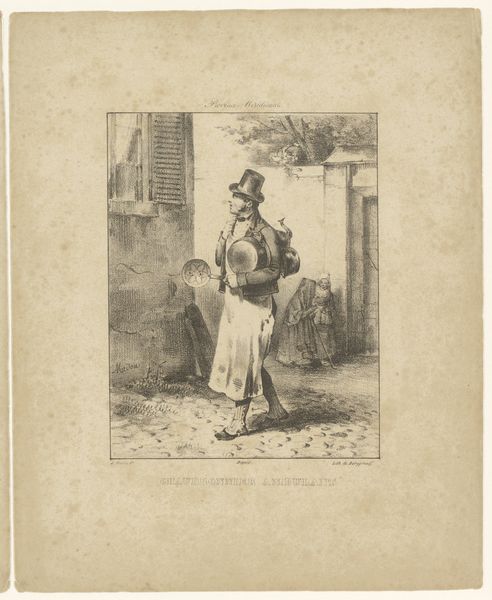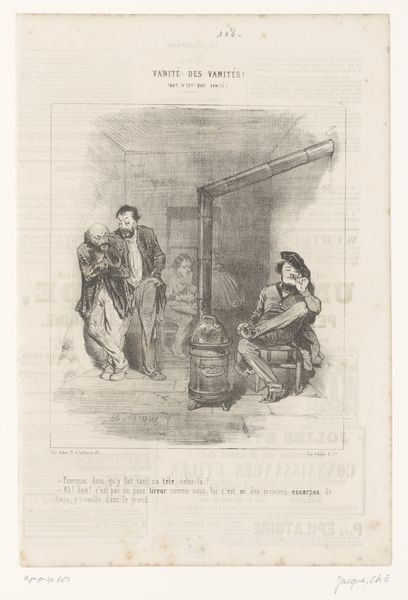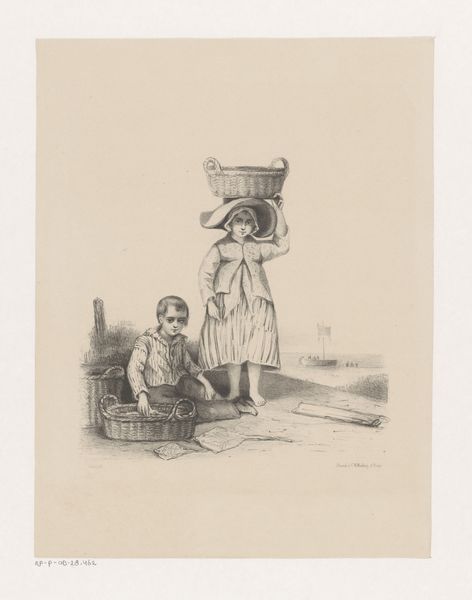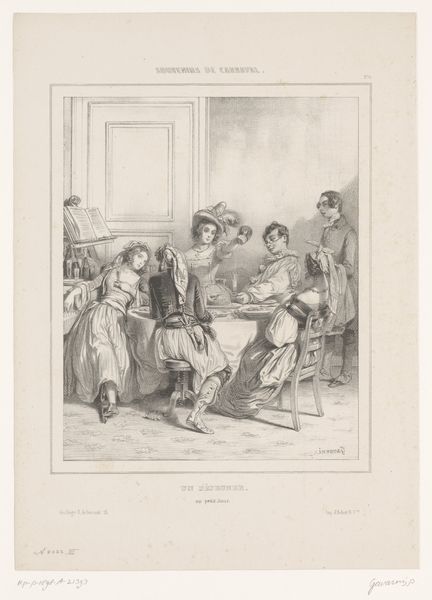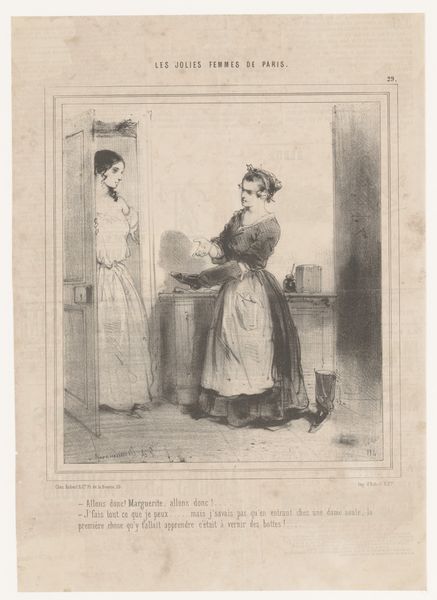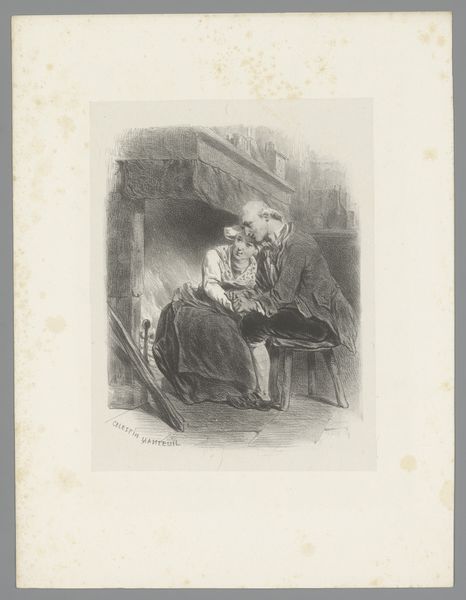
Prøvetryk til illustration til P. M. Møller: "En dansk students eventyr" 1884 - 1897
0:00
0:00
drawing, print, ink, pen
#
portrait
#
drawing
#
narrative-art
# print
#
figuration
#
ink
#
pen
#
genre-painting
Dimensions: 127 mm (height) x 94 mm (width) (bladmaal)
Editor: This is "Prøvetryk til illustration til P. M. Møller: "En dansk students eventyr," a test print made between 1884 and 1897 by Henrik Arnold Hamilkar Sørensen. It's ink on paper, a narrative scene. There's such delicate line work, but the subject matter feels quite heavy and emotionally charged. What catches your eye? Curator: The print reveals a lot about the industrialized image production of that era. Look closely; the artist isn’t necessarily aiming for "high art" but for functionality: illustration. This brings up questions around labour. Who decided the scene, the story? What were Sørensen’s working conditions? And who ultimately consumed these images, reproduced en masse for a book? Editor: That's fascinating! I was just thinking about the story being told, but the printing process opens it up completely. Does the medium influence our interpretation of the scene, compared to if it were painted, say? Curator: Absolutely. Ink allowed for quick reproduction, reaching a wider audience, primarily a bourgeois reading public. Think about the narrative itself – a student's adventures. This print participates in creating, and catering to, a specific kind of cultural identity tied to education and national romanticism that was available as a product of mass production and consumer culture. The very *being* of art becomes implicated in commercial exchange and the rise of the reading class. Editor: So, seeing it as a print for a novel shifts the whole context. It’s not just a picture, it’s a commodity. Curator: Exactly! And remember, printmaking was work, skilled labor. Exploring the story behind the final *thing* reframes how we view it. The act of choosing a medium reflects the context of its time and influences how audiences encounter it. Editor: I hadn't considered the industrial aspects, but now I realize this artwork tells as much about society as it does about the characters depicted. Curator: Precisely, looking at materials, processes, and dissemination routes opens exciting new avenues of interpretation.
Comments
No comments
Be the first to comment and join the conversation on the ultimate creative platform.
